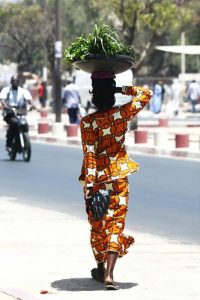
SODOM & GOMORRAH: Democracy is preparing to claim another victim, one with a rich cultural and linguistic history. The NKo alphabet, used to write the Mandekan language, may soon be extinct.
The Mandekan language, written in the NKo alphabet, is a minority language spoken in Senegal. The African country was once considered a haven for French due to the colonization of the country. For years French had existed side by side with native African languages, but with the expansion and development of democracy scholars say that minority languages are being pushed out.
Senegalese society has been largely rejecting languages such as Mandekan and the unique NKo alphabet that’s used to write it, and have instead been turning toward the local Wolof language. Wolof is the most widely spoken language in Senegal and has been widely adopted by Youssou N’Dour, a famous singer who has declared his intentions to run for president against the incumbent leader, Abdoulaye Wade.
Youssou N’Dor has released a number of songs on politics, mostly in Wolof. In addition, campaign speeches, slogans, party names, and posters are all relying on Wolof. Etienne Smith, a scholar at the Committee on Global Thought at Columbia University refers to this as the “wolofization” of Senegal. People are turning to Wolof because it’s the language most spoken by the people. As a result, minority languages like Pular, Serer, and Jola are being marginalized. The alphabets used to write these, such as NKo, are being used less and less.
When French was the dominant language, it was able to exist side by side with local tongues both because it was foreign and because it was almost universally understood. Senegal, in its democratic fervor, is seeking a lingua franca that appeals to the greatest number. The decision to use a local language has upset people in regions where Wolof isn’t the majority and immigrants who came to Senegal expecting more French to be spoken.
NKo is used to write Mandekan, Bambara, and Dyula, which some linguists classify as separate languages. About 5 million people speak and write with it. To learn more about NKo and the languages it’s used with, you should visit the NKo Institute of America here.